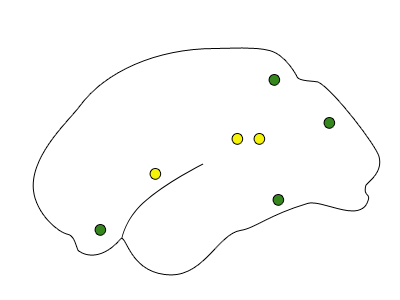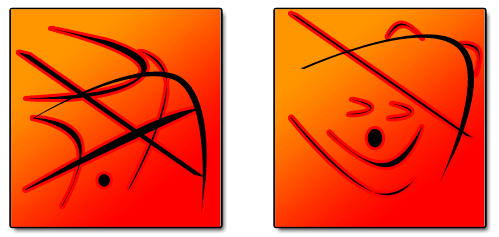Besides the imagery debate, which is concerned with the question how we imagine for example objects, persons, situations and involve our senses in these mental pictures, questions concerning the memory are still untreated. In this part of the chapter about imagery we are dealing with the questions how images are encoded in the brain, and how they are recalled out of our memory. In search of answering these questions three major theories evolved. All of them explain the encoding and recalling processes different, and as usual validating experiments were realised for all these theories.
In search of answering these questions, three major streams evolved. All of them try to explain the encoding and recalling processes differently and, as usual, validating experiments were realised in all streams.
The common-code theory
This view of memory and recall theories that images and words access semantic information in a single conceptual system that is neither word-like nor spatial-like. The model of common-code hypothesis that for example images and words both require analogous processing before accessing semantic information. So the semantic information of all sensational input is encoded in the same way. The consequence is that when you remember for example a situation where you were watching an apple falling down a tree, the visual information about the falling of the apple and the information about the sound, which appeared when the apple hit the ground, both are constructed on – the – fly in the specific brain regions (e.g. visual images in the visual cortex) out of one code stored in the brain. Another difference of this model is that it claims images require less time than words for accessing the common conceptual system. Therefore images need less time to be discriminated, because they share a smaller set of possible alternatives than words. Apart from that words have to be picked out of a much larger set of ambiguous possibilities in the mental dictionary. The heaviest point of criticism on this model is that it does not declare where this common code is stored at the end.
The abstract-propositional theory
This theory rejects any notion of the distinction between verbal and non - verbal modes of representation, but instead describes representations of experience or knowledge in terms of an abstract set of relations and states, in other words propositions. This theory postulates that the recall of images is better if the one who is recalling the image has some connection to the meaning of the image which is recalled. For example if you are looking at an abstract picture on which a bunch of lines is drawn, which you cannot combine in a meaningful way with each other, the recall process of this picture will be very hard (if not impossible). As reason for this it is assumed, that there is no connection to propositions, which can describe some part of the picture, and no connection to a propositional network, which reconstructs parts of the picture. The other case is, that you look at a picture with some lines in it, which you can combine in a meaningful way with each other. The recall process should be successful, because in this case you can scan for a proposition which has at least one attribute with the meaning of the image you recognised. Then this proposition returns the information which is necessary to recall it.
The dual-code theory
Unlike the common-code and abstract-propositional approaches, this model postulates that words and images are represented in functionally distinct verbal and non - verbal memory systems. To establish this model, Roland and Fridberg (1985) had run an experiment, in which the subjects had either to imagine a mnemonic or how they walk the way to their home through their neighbourhoods. While the subjects did one of this tasks, their brain was scanned with the positron emission tomography (PET). Figure 10 is a picture combining the brains of the subjects, which achieved the first and the second task.

Figure 10: Green dots represent regions which showed a higher activity during the walking home task; yellow dots represent regions which showed a higher activity during the mnemonic task.
As we can see on the picture, for the processing of verbal and spatial information different brain areas are involved. The brain areas, which were active during the walking home task, are the same areas which are active during the visual perception and the information processing. And among those areas which showed activity while the mnemonic task was carried out, the Broca-centre is included, where normally language processing is located. This can be considered as an evidence for both representation types to be somehow connected with the modalities, as Paivio’s theory about dual-coding suggests Anderson (1996). Can you imagine other examples, which argue for the dual-code theory? For example, you walk along the beach in the evening, there are some beach bars ahead. You order a drink, and next to you, you see a person, which seems to be familiar to you. While you drink your drink, you try to remember the name of this person, but you fail stranded, even if you can remember where you have seen the person the last time, and perhaps what you have talked about in that situation. Now imagine another situation. You walk through the city, and you pass some coffee bars, out of one of them you hear a song. You are sure that you know that song, but you cannot remember the name of the interpreter, nor the name of the song either where you have heard it. Both examples can be interpreted as indicators for the assumption that in these situations you can recall the information which you perceived in the past, but you fail in remembering the propositions you connected to them.

In this area of research, there are of course other unanswered questions, for example why we cannot imagine smell, how the recall processes are performed or where the storage of images is located. The imagery debate is still going on, and ultimate evidence showing which of the models explains the connection between imagery and memory are missing. For now the dual-code theory seems to be the most promising model.




